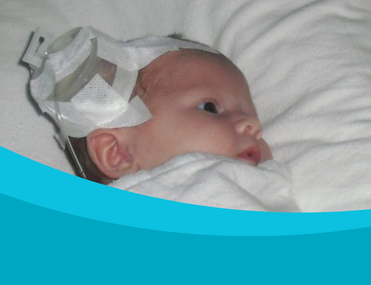He was initially diagnosed with pneumonia but following a lumbar puncture this was changed to bacterial meningitis.
Diane tells their story here.
“It was summer and I had taken my children to the cinema. Ryley was sleepy and irritable. I checked for a temperature but he wasn't hot.
“He went to bed as normal but woke the next morning screaming. We couldn’t console him. He was grey and limp and vomiting green mucus.
“We phoned our local hospital and they told us to ring the emergency doctor, as he was responding. As soon as the doctor saw him he told us to go straight to hospital. He thought it was the onset of pneumonia.
“Once at the hospital Ryley was screaming. The nurses were straight on it and hooked him up for his pulse and observations to be done. Then they requested a chest x-ray. This came back clear. They ordered bloods to be done and the bloods came back with a high level of infection.
Consultants were concerned
“The consultants were concerned and requested a lumbar puncture. Whilst this was being done I had to leave - his screams were horrific. I stood in the parents’ room, worried out of my mind.
“I saw a poster there about meningitis and Ryley was displaying the symptoms of the disease. I spoke to my husband and said that I thought he had meningitis.
“Doctors confirmed that he had bacterial meningitis and they started on antibiotic drips straight away.
“He had shown no previous signs indicating meningitis and the consultant said that he was glad that they had decided on the lumbar puncture, as otherwise it could have been misdiagnosed.
Second lot of antibiotics
“Ryley was on his second lot of antibiotics before the septic rash appeared. They said that he must have been about 14 hours into the meningitis and that within another 10 hours he could have died.
“Ryley spent four days in hospital and went back there every day for a further six days with his cannula for his intravenous antibiotics.
“Since having meningitis doctors have suspected Ryley has a blood disorder where his body can't produce enough white blood cells to combat infection. Whenever he becomes unwell he gets a blood blister rash under his skin and he has been treated again as a precaution for meningitis as it can produce a septic rash.
“Now, two-and-a-half years later, he is now being assessed for autism, but his paediatrician is looking into his meningitis to see whether it's caused any damage to his brain.”



